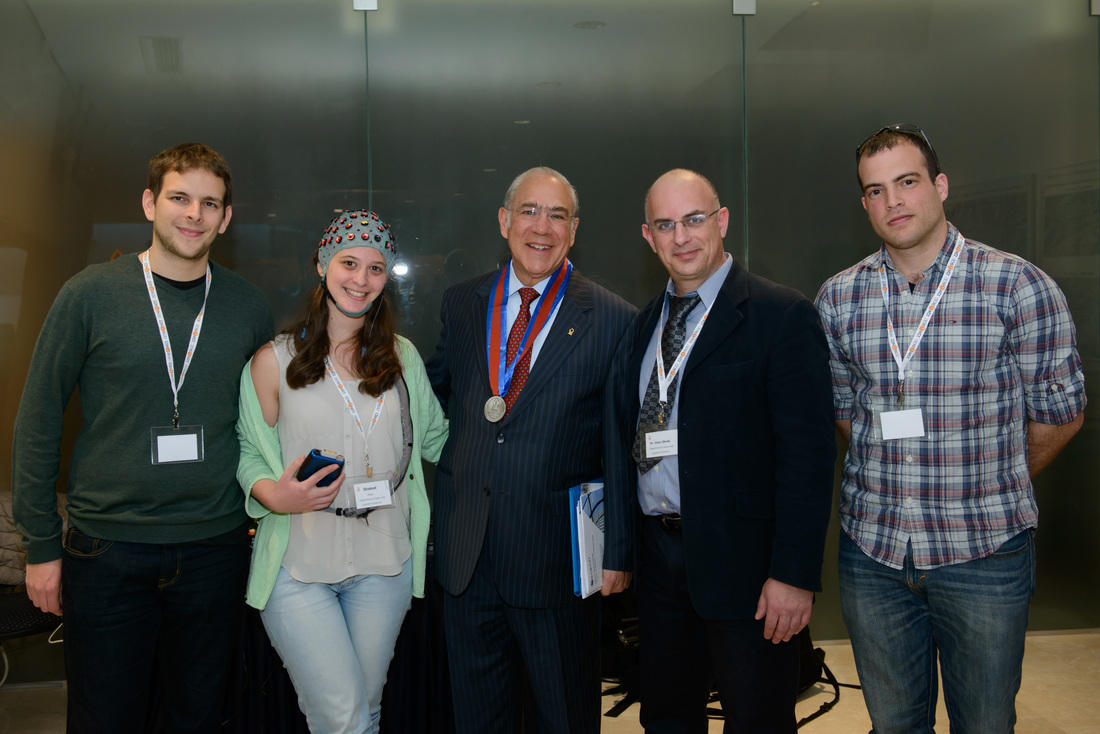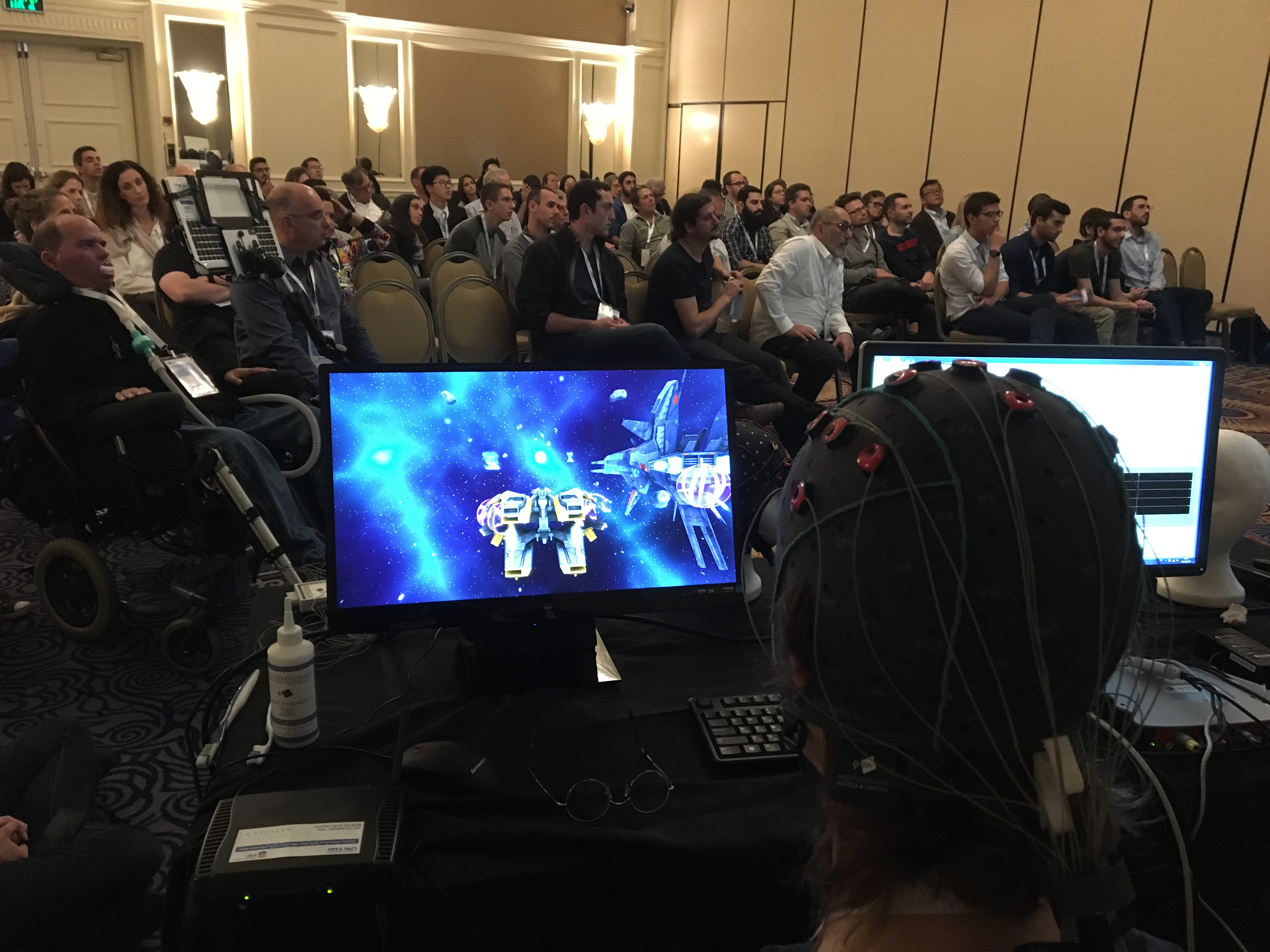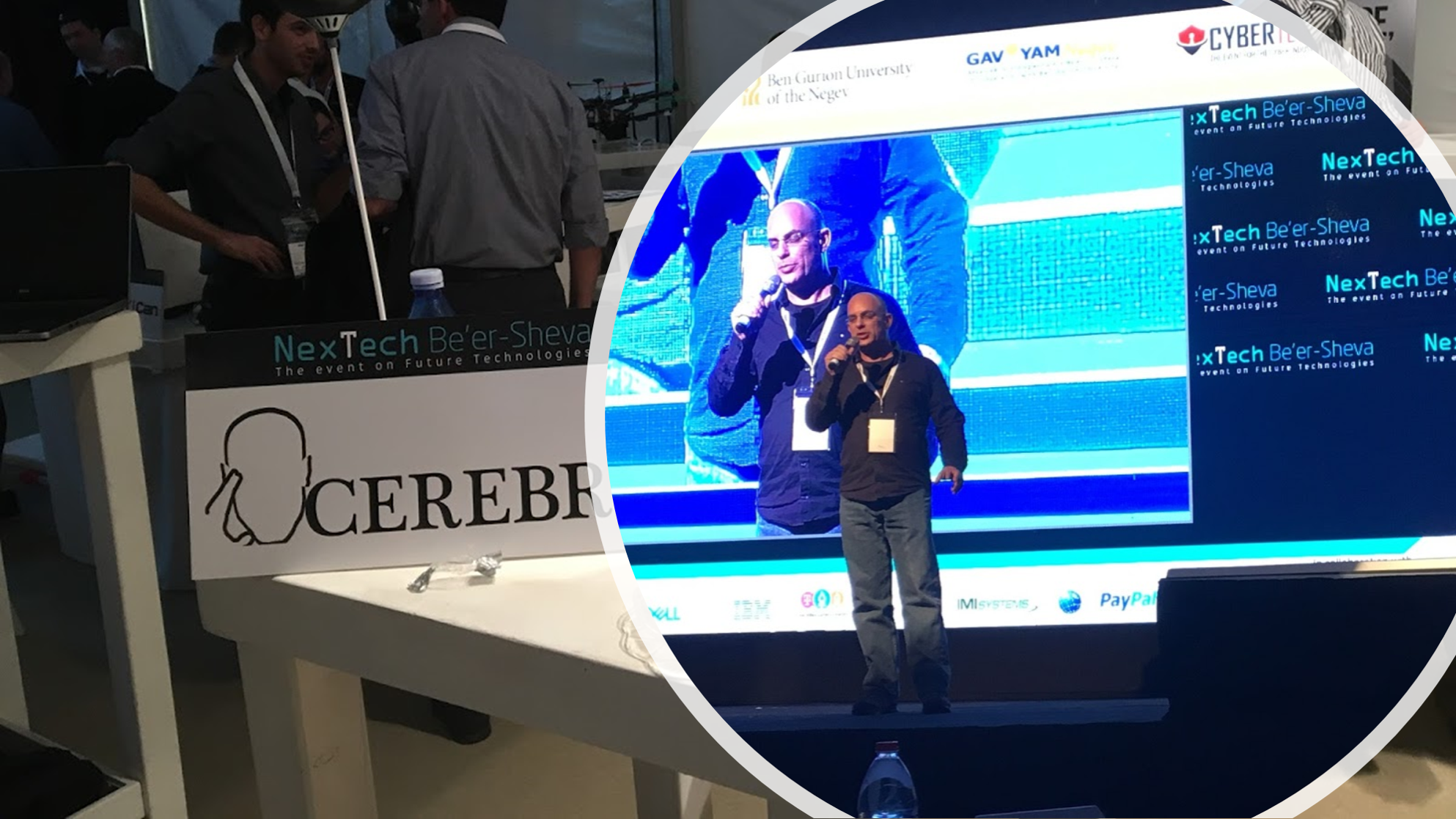BCI - From Hackathon Project to Master's Thesis and National News
by Eyal Zakkay
Brain Computer Interfaces (BCI) allow direct control over technology using brain activity alone.
Neuroscience has always fascinated me, which is why on my 2nd year as an undergrad Electrical Engineering student I started working as a research assistant at the Computational Psychiatry Lab at Ben Gurion University.
Finding this intersection of engineering and brain research was great. Building interfaces for ‘mind control’ over technology seemed like science fiction, this is also where I was first exposed to Machine Learning, which is the bread and butter of brain computer interfaces.
Brainihack Hackathon
My first BCI (that actually worked) was a result of a project I worked on during the Braininhack hackathon in Tel-Aviv, hosted by Microsoft and Autodesk and organized by Israel Brain Technologies (IBT). I used MATLAB and Simulink to design an interface that samples, processes and decodes brain signals in real-time.
Using the interface I built, and a g.HIamp EEG set, we showed how we can control the movements of a Lego Mindstorm robot built by my supervisor’s son.
The user controlled the movement of the robot using a BCI technique known as Motor Imagery, where imagination of hand movements generates detectable patterns in brain activity over the motor cortex. Brain activity was recorded by the EEG, which was sampled, processed and classified by my interface. Classification results were broadcasted by Wi-Fi to the Lego robot which steered left or right accordingly.
I believe appearance is better than words, so here’s a video of my team member Shaked navigating the robot using the power of her mind!

Shaked navigating the robot in a slalom course (video playback speed is slightly increased)
Following 2 days of developement, Our project won 3rd place in the hackathon (article on Geektime magazine).
Going Viral
Our project was received with great interest by the university. We were invited to give live demos to distinguished guests and donors of BGU. Including foreign politicians, representatives of global companies such as Tata, Samsung, Huawei, Bosch and more.
With OECD secretary general, José Ángel Gurría
Media Coverage:
We were also invited by national news on channel 10, to participate in a piece about BCI. Click to watch.

Conferences:
As the project led to deeper research, we presented our BCI at the international IBT conference (2017). We gave a workshop titled ‘Hands-on introduction to Brain Computer Interface’ together with Christoph Guger, owner at g.tec Neurotechnology.
Project Growth
As time went by, what started as a hackathon project led to serious research in the field of brain computer interfaces and deep learning. I started investigating new directions for BCI, both in algorithmic research and practical design.
M.Sc Thesis
In my M.Sc thesis I studied the use of Recurrent Neural Networks (RNN) for BCI design, specifically using Echo State Networks (ESN). We showed that RNNs, which are capable of dealing with the dynamical nature of brain activity, can improve Motor Imagery (MI) BCI accuracy. We submitted two journal papers which are currently under review.
Echo State Networks for BCI. Model illustration (left) and results (right)
Cerebro
In the summer of 2016 my thesis supervisor Dr. Oren Shriki and I founded a start-up company called Cerebro. We developed a BCI based controller for Virtual Reality (VR) platforms. We worked on this project for a full year.
Live demo of controlling a VR game using thoughts alone
One journey leading to another
What started as a fascination for Neuroscience, over the years led me to exciting challenges of advanced engineering, research, entrepreneurship and more. Currently I have set aside my affair with brain computer interfaces in the favor of deep learning research. However, I have a feeling that BCI will cross my path again in the future…





